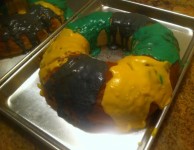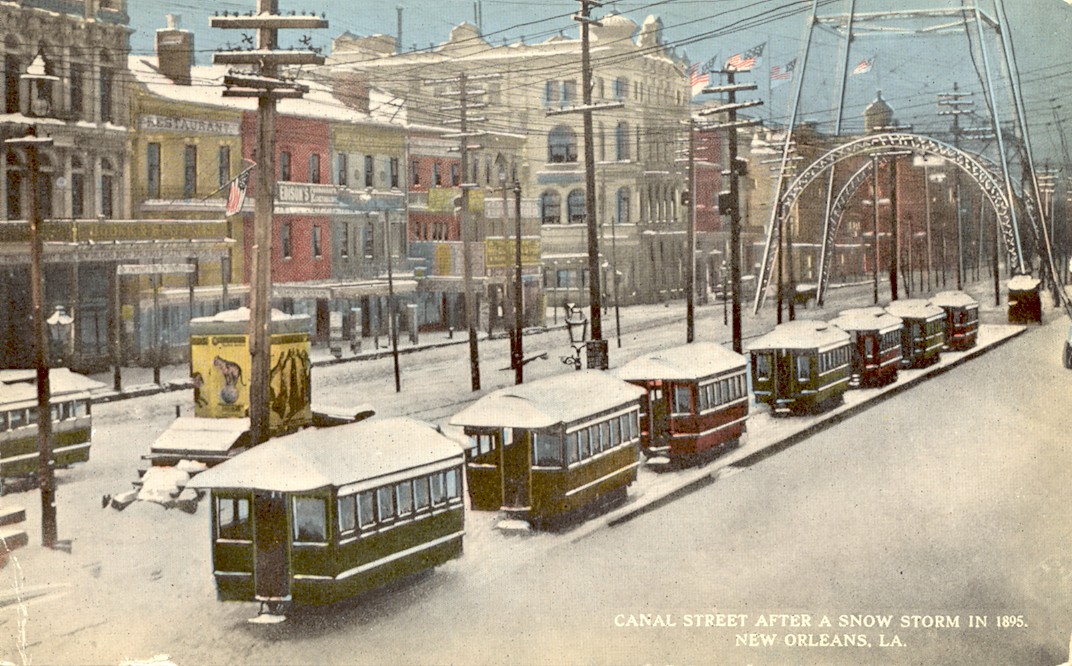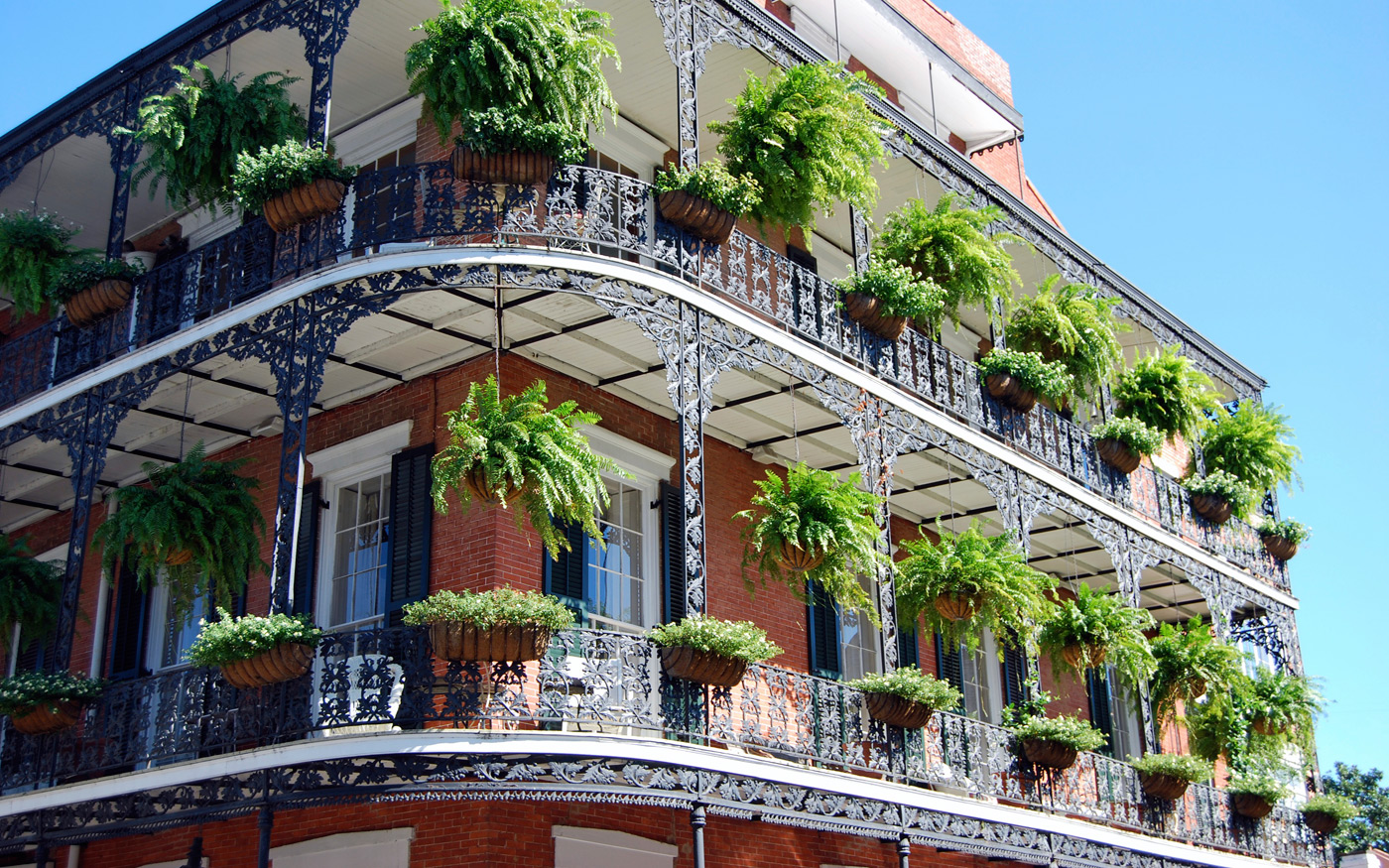Mardi Gras Field Trip: All That Glitters Is Gold Foil
Helen Reporting. Mardi Gras season and the air is filled with the sounds of high school brass bands practicing their numbers, chatter about out-of-town guests, parties, and costumes. Mardi Gras is money-making time for many people in the city. As the largest party in the world, it’s boon times for bartenders, waiters, hotel staff, and musicians.
Le Krewe d’Etat, which rolls the Friday night before Mardi Gras, is known for its particularly ghoulish throws (skulls with light-up eyes) and satiric, politically-minded floats. This year, I became acquainted with a group of friends contracted by this krewe to work on their floats. They’re known as “the leafers,” and their job is to add sparkling gold and silver trim to the already-painted floats. I even had the honor one Saturday of joining them at their task.
The basic rules to leafing are simple. Warm colors—red, orange, deep green, and purple get gold leaf. Cool colors—blue, pale green and pink—get silver leaf. No faces get leaf. Empty expanses on the floats simply get dots for trim. When I say “leaf,” I’m not talking about the trim of gold leaf at Versailles. These leaves are strips of gold and silver paper, similar to tissue paper. One leafer paints a line of glue across the float and another follows behind, sticking the foil to the glue. Another rule: The strips cannot lie flat. The goal is for the leafing to blow in the breeze as the float rolls down the street. The rate for leafing is $60 per float. With several people working on each float, two or three can be done in four hours.
The floats are constructed and decorated in a cavernous warehouse, or “den,” which is freezing, even on warm days. The glue sticks to everything and leafers rub their hands in the dirt on the floor as a sort of powder to lessen the strength of the glue. Dressing in warm clothing, leafers have a fun; music plays on the radio. Outside the flambeaux manager tests the kerosene torches, which will be hand-carried to light the night parade.
The krewe members each spend several thousand dollars putting on the parade. By some estimates, each member spends upwards of $2,000 on plastic beads alone. Then they don expressionless plastic masks and elaborate costumes and throw trinkets at the mass of revelers. Some say the large Mardi Gras krewes are composed of rich men and women, happy to put on a party to keep the poor from complaining, from demanding change.
However, if you’ve ever been to a Mardi Gras parade, you know the elation, the sheer joy and sense of accomplishment you feel when you make eye-contact with a masked rider and catch a strand of hot-pink plastic beads. You’ll knock down an old lady to make the catch and you feel overwhelming gratitude to the maskers. It’s only the next morning, when you look at the pile of plastic on your living room floor, the natty wig, the sequined vest, that you realize how silly this whole celebration must seem to outsiders. But that is the spirit of Mardi Gras—a fleeting moment of joy in a world that is often messy and broken. Once a year, these moments of joy are worth it.
Here I am as a leafer, decorating a float: http://www.youtube.com/watch?v=XZZGJQh8HeU&hd=1




